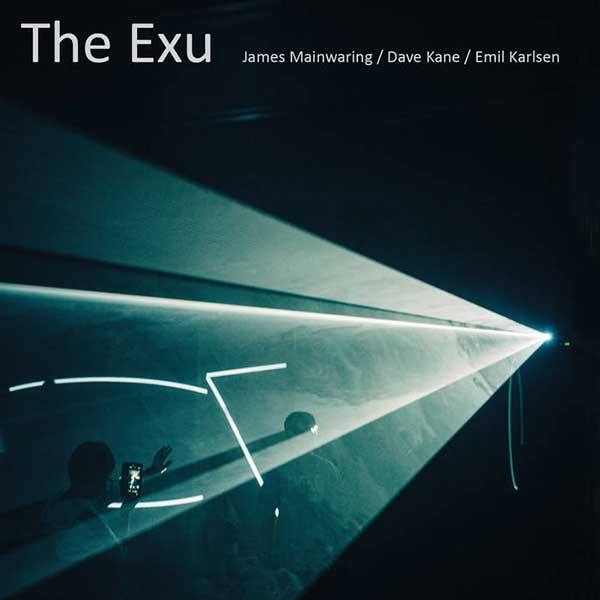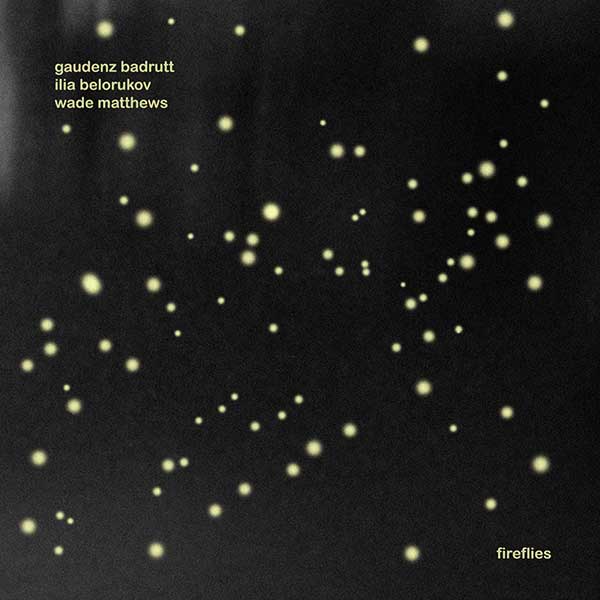The Exu, The Exu (Discus Music)
Fireflies, Gaudenz Badrutt / Ilia Belorukov / Wade Matthews (Scatter Archive)

Sax player and Mercury Prize-nominee James Mainwaring has worked with artists as diverse as Django Django, Nduduzo Makhathini, John Law, and Matthew Bourne. As a teenager, Irish-born bass player Dave Kane bought his first bass guitar for fifty pounds from a catholic priest. He made good use of it in local alternative and punk bands, later moving on to jazz and playing at various times with Keith Tippett, Evan Parker and Paul Dunmall, among others. Norwegian dummer Emil Karlsen has also worked with a wide range of jazz and free improv musicians. Together they formed the trio, The Exu. As for the kind of music they make together, as Kane says in the album notes, ‘we are the sum of our record collections, the films we have seen, the books we have read. It all goes into the mix to make our music.’
The trio took their name from a painting by the New York Artist Jean-Michel Basquiat. As it says on the band’s website, ‘the … moniker embodies the trickster psychopomp deity from the Yoruba religion—a patron of boundaries and travellers, invoked during crucial decision-making processes, and responsible for guiding souls to the afterlife. Basquiat’s Exu symbolises chaos and a disregard for codified rules and conventional behaviour.’
Having read this and listened to the first track, I was surprised at just how un-chaotic it was, though. However, when they leave the basic material behind and set off into uncharted territory, they really do live up to their name. A few tracks stand out: ‘The Field Next to the Road’ has a compelling oddity about it, a quality suggested, I thought, by the quirky title. In ‘Versus Medici’, a fragmentary structure seems to gradually coalesce, in the second half, into a hypnotic theme. Two of the tracks bear dedications to other musicians: one to US saxophonist Tim Berne, the other, to Kurt Cobain. The Cobain track has the jazz equivalent of the dark, heavy feel you might get in a Kurt Cobain song.
Kane’s bass playing is forever versatile, making creative use of the whole range of the instrument. Mainwaring’s sax-playing is similarly wide ranging, one minute skronking and growling, the next forging almost-Romantic lyrical phrases. Karlsen’s drumming is endlessly creative, adding depth and colour to the texture of the trio. Definitely worth checking out.

Switzerland-based musician Gaudenz Badrutt started life as a pianist but for the last twenty years has worked with electronics, using computers, live sampling and other electronic devices. Ilia Belorukov, originally from St Petersburg, but now living in Serbia, is an improvising musician who works principally with alto sax and modular synthesizer. Based in Madrid, Wade Matthews makes music using digital synthesis, field recordings (processed in real time) and amplified objects.
A single, thirty-seven minute track, Fireflies, is a recording of a performance given by these three musicians at Cruce in Madrid in April, 2024. Cruce, for anyone who’s not heard of it, is a collectively-managed community hub for young Spanish creatives and intellectuals which hosts poetry readings, concerts, reading groups and so on. Belarukov and Badrutt have played together as a duo for some years. However, neither had played before with Matthews, so this recording represents a first. Matthews, in the album notes, raises an interesting point: in most concerts, the audience can clearly see what the musicians are doing by their movements. This visual element helps the listener make sense of the interaction between them. However, when all the performers are playing electronic devices it’s very difficult to know who is doing what. With a recording, the situation for the listener becomes even more opaque! As Matthews says, the listener has to learn ‘to grasp how the sounds themselves interact, which can only be learned by listening to music that really works, music in which the sounds actually do interact in meaningful ways.’ It’s an interesting idea, although it does raise the question of exactly how we listen to music and how much we need to know about it, moment to moment, when we are immersed in it.
The track itself is an absorbing listen. From the outset, a contrast is established between pitched sounds (usually long) and unpitched (usually very short). As the piece goes on, this distinction is broken down, new sounds are thrown into the mix and the whole develops into a rich conversation in sound (I was reminded of text-pieces by Stockhausen in which he invites performers to mediate between extremes). Almost twenty-three minutes in, the music lapses into silence, only to begin again a few seconds later, gradually restoring the conversation. A few minutes from the end, the pace subsides with the introduction of water sounds and slowed-down voices, after which we find ourselves back in a region dominated by long, predominantly pitched sounds.
Throughout the piece, the musicians make creative use of the stereo space. There’s another aspect of Matthew’s point about the visual element of performance at work here and the situation is even more complex than the one he describes: when you watch performers on acoustic instruments, you not only see them make the sound, you see, as well as hear, where the sound comes from. With electroacoustic music, not only can the audience not see who is making each sound, but the performers can often – depending, of course, on their setup – project the sound from different points in the performance area. One performer can even throw sounds from one place to another to create a ‘conversation’ not unlike one made by two performers.
Badrutt, Belorukov and Matthews may not have played together as a trio before, but, having listened to Fireflies, I’d say it is to be hoped they’ll be playing together again.
.
Dominic Rivron
LINKS
The Exu:
https://discusmusic.bandcamp.com/album/the-exu-182cd-2025
Fireflies:
https://scatterarchive.bandcamp.com/album/fireflies
.
